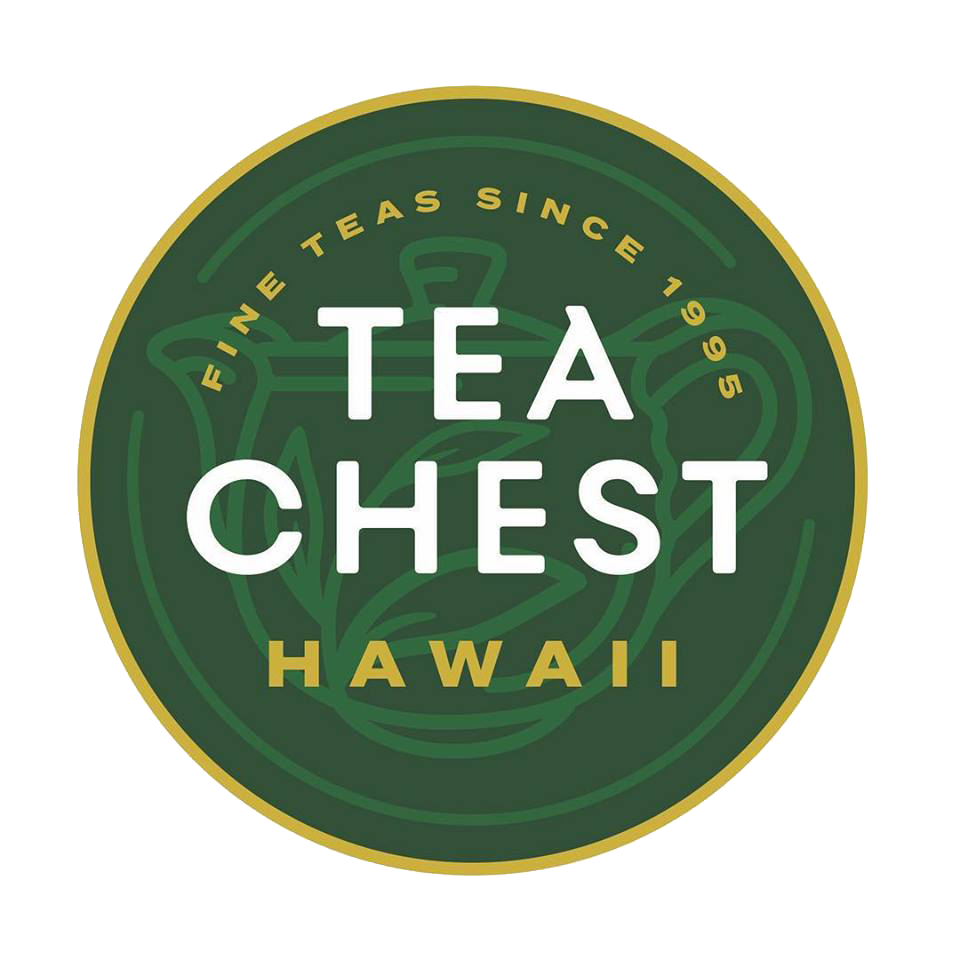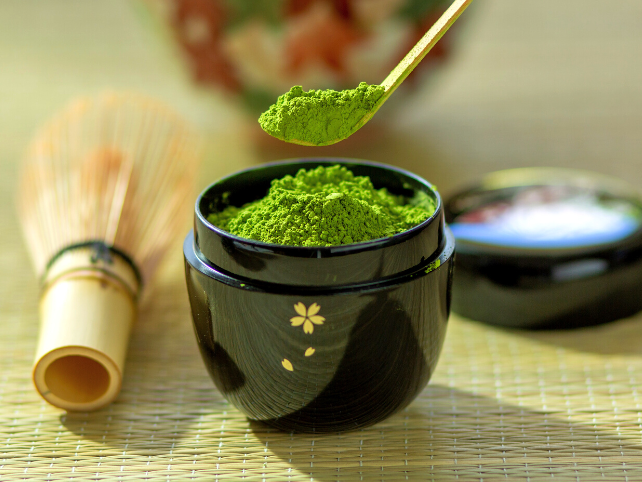The Magic of Matcha: How To Brew, Enjoy and Benefit From This Super Green Tea
Are you looking to expand your horizons as a tea enthusiast? Check out matcha, the vibrant and nutrient-packed Japanese green tea powder that's been taking the world by storm. In this article, you’ll learn the difference between authentic and fake matcha, how to properly brew, enjoy, and reap the benefits of this super green tea.
Matcha is a great addition to your routine. It’s a quick respite to clear the mind and great way to fuel your day. Preparing a bowl of matcha can be meditative, calming and very rewarding because you’re crafting something delicious yourself that is beneficial for yourself.
Matcha is not your average cup of tea. Unlike traditional steeped tea, matcha is made from finely ground green tea leaves, offering a concentrated dose of antioxidants, vitamins, and minerals. Its distinct earthy flavor and vibrant green color make it a delight for the senses.
But how do you brew matcha to achieve that perfect frothy consistency? What are the best ways to enjoy it? And what are the health benefits that make matcha so highly regarded?
Join us as we explore the magic of matcha, from its centuries-old ceremonial origins to its modern-day popularity. Whether you're a matcha novice or a seasoned pro, this article will provide you with all the information you need to make the most of this unique and invigorating beverage.
What is matcha?
Green tea powder was introduced to Japan by Buddhist monks returning from China in the 1100s. It was customary at the time for tea to be powdered which was easy to transport and prepare. The making of green tea powder was refined over time and the art of matcha, along with its accoutrements, became established in the country’s culture in Japanese tea ceremony.

Stone milled matcha comes from Camellia sinensis — the same plant as sencha green tea — with one big difference during cultivation. To produce tencha, the processed tea used to make matcha green tea powder, the tea plants are shaded for twenty to forty days from the harvest date. The growing cycle for new tea shoots is about 90 days from pruning. Shading can take place for 20-40 days, which accounts for a significant portion of time for the young tea leaves.
This shading technique has been used for about 400 years when farmers in Uji, where the best matcha is produced, realized that plants that grew in natural shade created by trees produced a smoother, mellower taste compared to plants that grew in open fields without shade.
Although they come from the same plant, matcha and other green teas differ in the way they are brewed. While making green tea requires steeping the dried leaves in hot water, matcha is the entire leaf ground up into a fine powder. This is why it retains so much more of the nutrients, caffeine, and color the plant possesses. With matcha, you are actually consuming the leaf itself.
What does matcha taste like?
Because farmers shade the plant for a good portion of the new growth period, chlorophyll production is boosted in the leaves of the plant and thus the plant has a darker green color. The super antioxidant that is found in tea, epigallocatechin-3-gallate (EGCG), is produced when sunlight converts chlorophyll and amino acids into catechins.
Matcha has a pleasant grassy, vegetal flavor combined with sweet and nutty finish. Catechins have a bitter taste. Amino acids have a sweet taste. Shaded teas like matcha taste sweeter than brewed green tea because the ratio of amino acids to catechins is higher than in teas grown in constant sunlight. Matcha also goes well with milk as a latte unlike its other leafy green tea.
Matcha Benefits
The health benefits of Matcha is that this green tea is still very high in antioxidants that are important for preventing chronic disease and helping reduce cell damage. Some studies have also shown that it can improve brain function, specifically reaction time, attention, and memory.
EGCG has proven anti-cancer properties — and it is abundant in matcha! Because matcha has only been trending recently, there have not been very many research studies on it. However, because green tea and matcha come from the same plant, they have a lot of the same components and properties. So, for the most part, matcha is believed to share a lot of the benefits as green tea, including weight loss, heart health, and improved liver function.
Is matcha caffeine a good alternative to coffee?
Matcha is a good alternative to coffee! With about 70mg of caffeine per serving, it comes in under the approximate 95mg in a cup of coffee but there is more than enough to perk you up in the morning or prop you up as the afternoon draws long.
What’s more, matcha also contains a compound called L-theanine. This amino acid has a nirvana effect on the brain which helps you feel more relaxed, less anxious and more focused.
Is drinking matcha everyday ok?
The short answer is YES! Of course, this comes with the caveat that in general when trying new things, you should do what is best for your own body. Because matcha is green tea powder, you are consuming the entire leaf. Therefore, nutrients including caffeine are absorbed more quickly by the digestive system. But, there is nothing stopping you from drinking matcha every day if it fits your needs without any side effects.
Where to buy matcha
Japan is the only country that produces matcha. Matcha is made from a specific Japanese tea plant, produced according to specific protocols and stone milled to exact specifications. All other powdered green teas are technically not matcha.
Two classes have emerged - ceremonial grade and culinary grade. “Ceremonial grades” may be higher priced but does not mean it is made in Japan. “Culinary grades” are likely made in China. In Japan, there is only one class of green tea powder - MATCHA. There is distinct correlation between quality and price.
This is where it is important to know your tea purveyor. At Tea Chest Hawaii, we promise only authentic, top quality Matcha.
One minute matcha: Tools to matcha easy
You can use a metal teaspoon and an electric frother but there is a sense of authenticity and accomplishment when you use a tea bowl (chawan), a wooden whisk (chasen), and a bamboo tea scoop (chashaku). Using a teaspoon to measure two grams of matcha is like trying to kill a mosquito with a bazooka. A fine shift is a nice option to remove clumps.
When the instructions of a drink mix calls for 2 teaspoons per serving, it’s likely not matcha and there ingredients like creamer and sugar have been added.
Check out our matcha accessories here!
Best way to store matcha
The biggest enemy of matcha is oxygen which will cause your matcha to lose its vibrant color and nutrients. For this reason, we recommend you buy matcha in small portions that you can use in 60-90 days. Store in the refrigerator and in an airtight container.
How to prepare matcha
You can enjoy top quality matcha and its benefits in one minute or less. Matcha is traditionally whisked with hot water into a hot cup of tea with a bit of froth on top — like in Japanese tea ceremony.
Instructions
- Sift matcha to remove clumps, if needed
- Add 2 grams of matcha to 2 oz of hot water and whisk to remove clumps
- Add 4 oz of hot water then whisk back and forth motion rather than in circles
- Water Temp: 175° F (80° C)

How to make a Iced Matcha Latte
For a trendy way to enjoy matcha cold, check out this Starbucks-inspired iced matcha latte recipe:
Ingredients
- 12oz your milk of choice
- 6-10 grams matcha powder to desired strength
- 2 tsp vanilla, honey, or sugar
- 1 cup ice
Instructions
- Prepare the matcha tea
- Mix the matcha tea with milk and other ingredient(s)
- Pour over iced then serve
Conclusion: Matcha’s role in your tea routine
Matcha has a wonderful tea to explore and play with. From hot tea, iced lattes to desserts, matcha is versatile and nutritious. There’s a lot of fake matcha on the market, green tea powders posing like matcha, so it’s important to know the difference. With a variety of benefits, and easy to make, matcha is a great drink to add to your tea routine.
Written by Kahiau Among and Byron Goo
Sources:
https://www.healthline.com/nutrition/7-benefits-of-matcha-tea
https://www.ncbi.nlm.nih.gov/pmc/articles/PMC2903211/
https://pubmed.ncbi.nlm.nih.gov/31758301/


Share:
Tea For Beauty
Tea Buying Guide: Tips to Finding the Right Tea